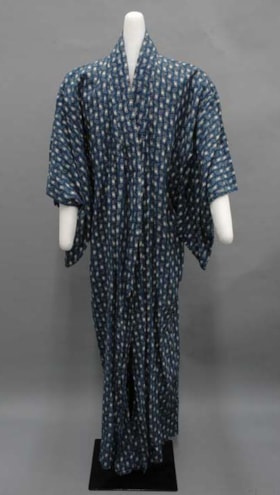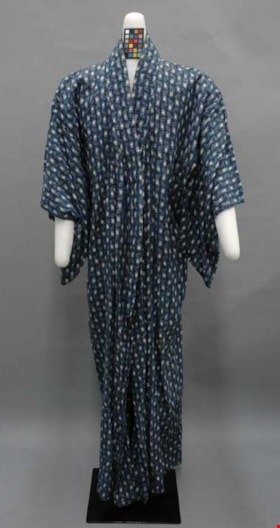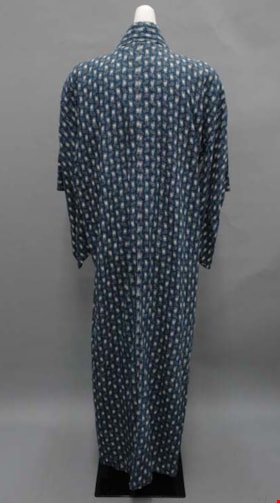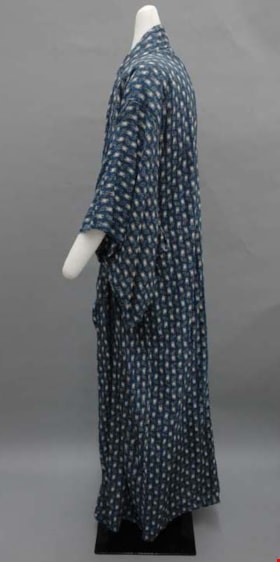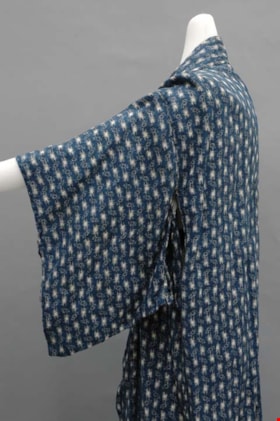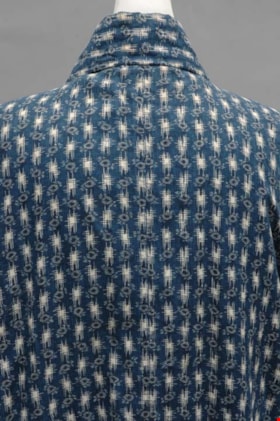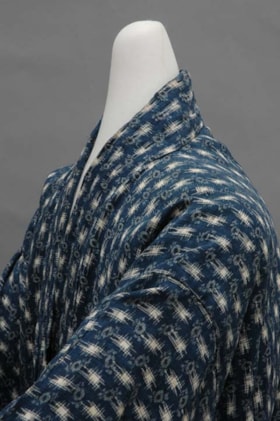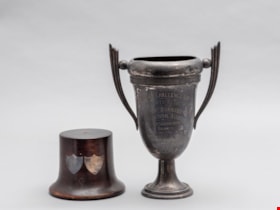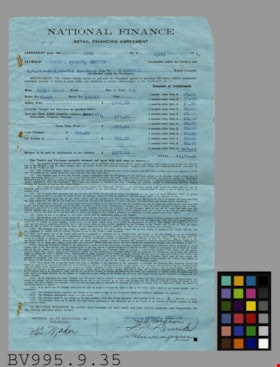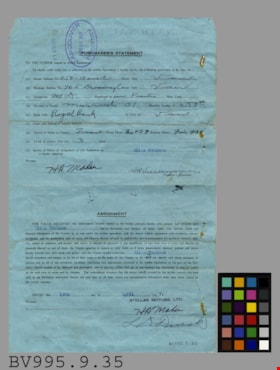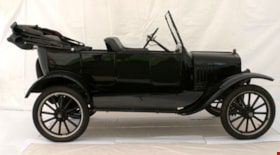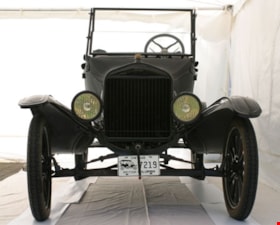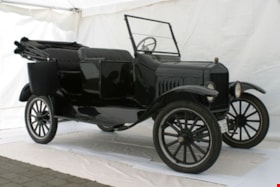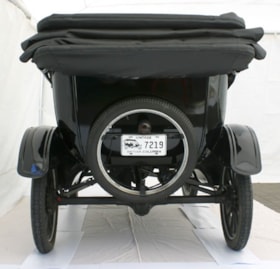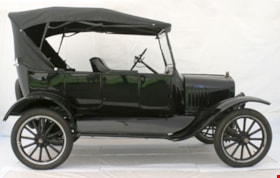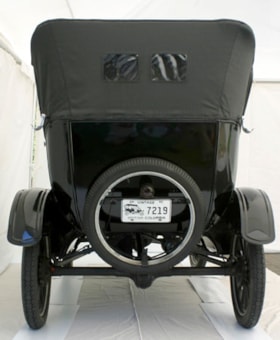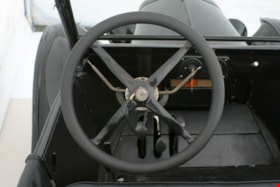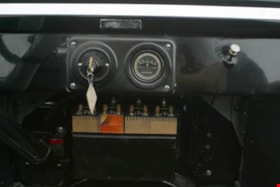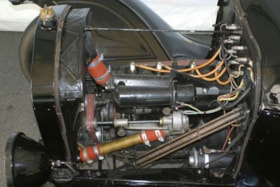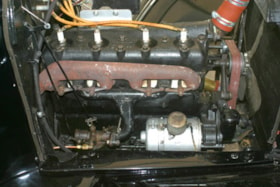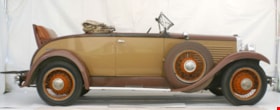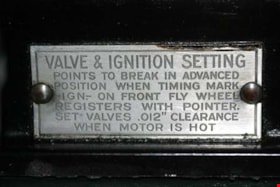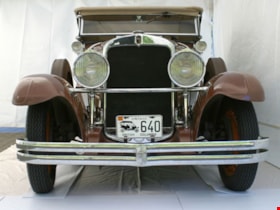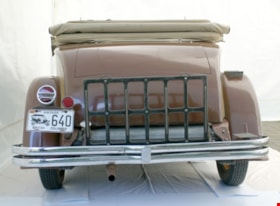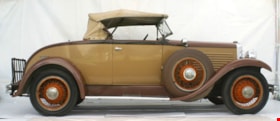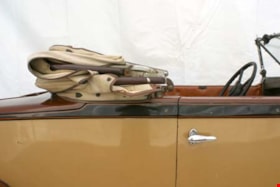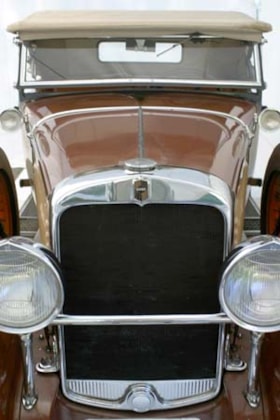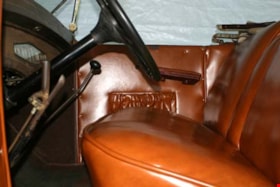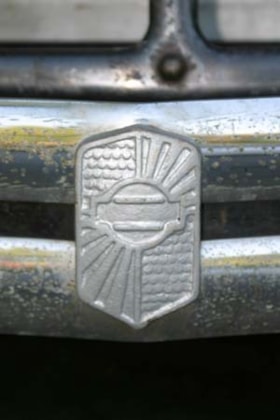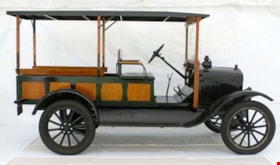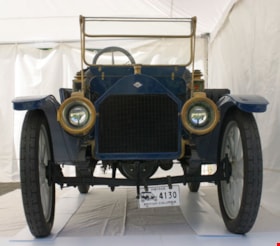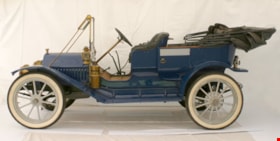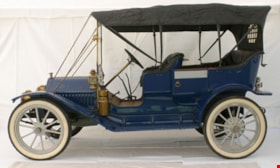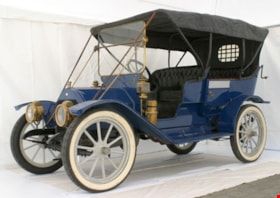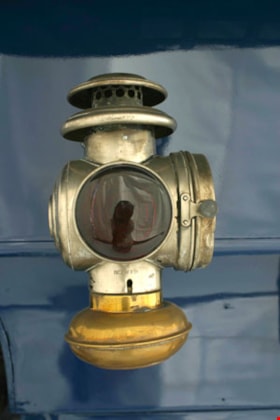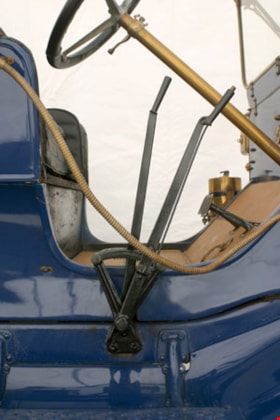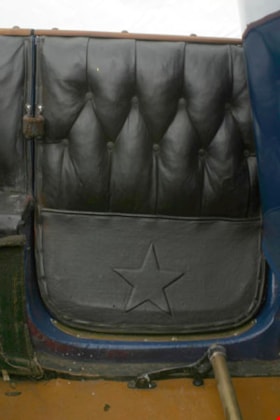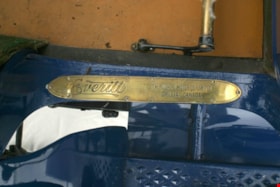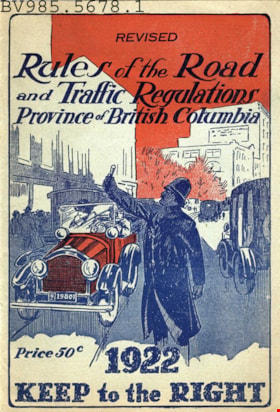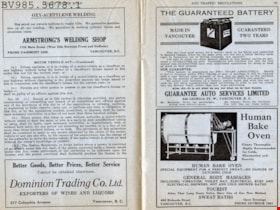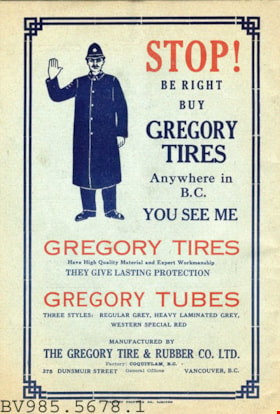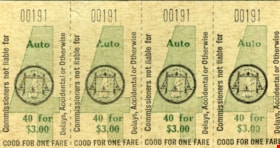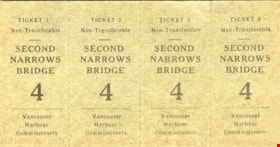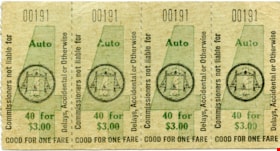More like 'Harding and Yasue Yasui in the family car'
Narrow Results By
Decade
- 2020s 36
- 2010s 49
- 2000s 61
- 1990s 88
- 1980s 84
- 1970s 78
- 1960s 69
- 1950s 60
- 1940s 49
- 1930s 42
- 1920s 16
- 1910s 11
- 1900s 10
- 1890s 3
- 1880s 1
- 1870s 1
- 1860s 1
- 1850s 1
- 1840s 1
- 1830s 1
- 1820s 1
- 1810s 1
- 1800s 1
- 1790s 1
- 1780s 1
- 1770s 1
- 1760s 1
- 1750s 1
- 1740s 1
- 1730s 1
- 1720s 1
- 1710s 1
- 1700s 1
- 1690s 1
- 1680s 1
- 1670s 1
- 1660s 1
- 1650s 1
- 1640s 1
- 1630s 1
- 1620s 1
- 1610s 1
- 1600s 1
Subject
- Academic Disciplines 1
- Accidents - Automobile Accidents 1
- Adornment 5
- Adornment - Jewelry 1
- Adornment - Lapel Pins 4
- Advertising Medium 18
- Advertising Medium - Signs and Signboards 18
- Agricultural Tools and Equipment 3
- Agricultural Tools and Equipment - Gardening Equipment 1
- Agriculture 7
- Agriculture - Crops 1
- Agriculture - Farms 11
dressing gown
https://search.heritageburnaby.ca/link/museumartifact11595
- Repository
- Burnaby Village Museum
- Accession Code
- BV985.3499.1
- Description
- Dressing gown; blue and white. Japanese informal house dress or "yukata"; cotton; double ikat or "egasuri"
Images
Interview with Jiro Kamiya, 2015
https://search.heritageburnaby.ca/link/museumdescription4476
- Repository
- Burnaby Village Museum
- Date
- [2015]
- Collection/Fonds
- Burnaby Village Museum fonds
- Description Level
- Item
- Physical Description
- 1 sound recording (mp3) (01:11:02 min)
- Scope and Content
- Recording of a interview with Jiro Kamiya about the ofuro he built as an exhibit for display at Burnaby Village Museum, and his work in Canada generally. When he speaks in Japanese, his son Frank Kamiya does the English translation. Frank recalls how his father, a Japanese-trained carpenter, came …
- Repository
- Burnaby Village Museum
- Collection/Fonds
- Burnaby Village Museum fonds
- Series
- Museum Oral Histories series
- Subseries
- Museum research interviews subseries
- Description Level
- Item
- Physical Description
- 1 sound recording (mp3) (01:11:02 min)
- Material Details
- Interviewer: Lisa Codd Interviewees: Jiro Kamiya and his son Frank Kamiya Location of Interview: Nikkei Home, Burnaby Interview Date: [2015] Total Number of Tracks: 1 Total Length of all Tracks: 1:11:02
- Scope and Content
- Recording of a interview with Jiro Kamiya about the ofuro he built as an exhibit for display at Burnaby Village Museum, and his work in Canada generally. When he speaks in Japanese, his son Frank Kamiya does the English translation. Frank recalls how his father, a Japanese-trained carpenter, came to be involved in the project, which was donated to the Museum by the Japanese Canadian Citizens Association. An unidentified woman is also present and contributes to the discussion. 0:00 – 6:38: Frank Kamiya recalls the museum’s ofuro project, describing how his father became involved with it. He talks about the ofuro in Canada, speaking of their importance to Japanese Canadians but noting that they have been superseded by newer products. Frank also mentions that ofuros are now subject to modern building regulations. 6:38 – 20:30: Jiro Kamiya describes the construction of the ofuro. He explains the technique of water-proofing and talks about the different sizes of baths, discussing the differences in Japanese and Canadian styles and in the way water was supplied. 20:30 – 28:27: This portion of the recording pertains to Jiro Kamiya’s background as a carpenter in Shizuoka, Japan, in the family’s business, and how he came to immigrate to Canada. Frank talks about his father’s innovations and skills. He discusses the differences between Japanese and Canadian tools. Lisa Codd asks about the tools Jiro donated to the museum. 28:27 – 36:00: Frank talks about his father’s involvement in the building of the Museum’s ofuro. He notes that he himself drew up the plans and submitted them to City Hall. He asks about the ofuro’s plaque and the building’s condition. Lisa explains how the classification of buildings as replica or heritage determines how conservation choices are made. 36:00 – 45:47: Frank describes the purpose and use of the ofuro and the kind of accessories which should be included in the Museum’s display. The exact meaning of ‘ofuro’ is discussed with Jiro, as is bathing protocol for the larger and smaller kinds. 45:47 – 59:13: Jiro recalls New Year and other traditions and Lisa and Frank remark on the differences between the established infrastructures of Japan and those of rural Canada. Frank describes his father’s work in Canada. Jiro talks of being unable to join the carpenters union, but advancing in his profession through his ability and experience with Japanese techniques. 59:13 – 1:11:02: Jiro talks about the work that he did during internment during World War II and his choice to go to Winnipeg with his family. Frank relates how his father adapted to shipyard work, and Jiro tells anecdotes about his working years.
- History
- Interviewee: Jiro Kamiya (ne Tsuneki) was born on August 29, 1910 in Shizuoka Ken, Japan to parents Torakichi Tsuneki and Sono Ssuneki. In 1936, Jiro married Toneko Kamiya. The Tsuneki family were Master Carpenters for over 500 years and the family business, Torakichi Tsuneki Construction Co was the largest and best known construction company in Shizuoka Ken. Jiro also became a master carpenter working for his father's company. In 1933, Jiro immigrated to Canada and in 1936, he returned to Japan to marry. In 1937 he got work at the Hammond Cedar Mill leading a crew of six men and worked there for about three or four years. In 1942 along with over 21,000 Japanese Canadians, Jiro and his family were forcibly removed from the coastal area of British Columbia. Jiro and his family were relocated to Oak Bluff, Manitoba to work on the beet farms. JIro chose this location of internment so that he could keep his family together. While living in Manitoba, Jiro also found work as a carpenter. In 1948 when he was permitted to return to British Columbia, Jiro and his family relocated to Kamloops. In 1951, he began working as a carpenter for Matsumoto Shipyard in North Vancouver and between 1961 and 1974, he worked for Grimwood Construction. From 1975, he worked for Dawson Hall Construction until his retirement at the age of 68. Following his retirement he built a house for his nephew on Mayne Island and a summer house for himself which he completed in 1988. In 2001, Jiro and his wife, Toneko moved to Nikkei Home. While living at Nikkei Home, Jiro made chopsticks out of hardwood, creating over a thousand pairs up until he was 99 years old. Jiro passed away in 2015. Interviewer: Lisa Codd has worked in the museum sector since 2000 and between 2005 and 2019, she worked as the curator at the Burnaby Village Museum. In 2019, Lisa began her work as the City of Burnaby Heritage Planner.
- Creator
- Burnaby Village Museum
- Subjects
- Persons - Japanese Canadians
- Names
- Kamiya, Jiro
- Kamiya, Frank
- Accession Code
- BV019.13.1
- Access Restriction
- No restrictions
- Reproduction Restriction
- No known restrictions
- Date
- [2015]
- Media Type
- Sound Recording
- Notes
- Audio is only available to listen at the Burnaby Village Museum
Audio Tracks
Interview with Jiro Kamiya, 2015, [2015]
Interview with Jiro Kamiya, 2015, [2015]
https://search.heritageburnaby.ca/media/hpo/_Data/_BVM_Sound_Recordings/Oral_Histories/2019_0013_0001_001.mp3Interview with Toki Miyashita by Rod Fowler February 27, 1990 - Track 1
https://search.heritageburnaby.ca/link/oralhistory516
- Repository
- City of Burnaby Archives
- Date Range
- 1900-1946
- Length
- 00:07:05
- Summary
- This portion of the interview is about Toki Miyashita’s family’s internment during WWII, and her Oikawa grandparent’s immigration to BC and settlement on Lion and Don Islands at the mouth of the Fraser River. She describes how the family was moved to the internment camp “The Orchard” in New Denver,…
- Repository
- City of Burnaby Archives
- Summary
- This portion of the interview is about Toki Miyashita’s family’s internment during WWII, and her Oikawa grandparent’s immigration to BC and settlement on Lion and Don Islands at the mouth of the Fraser River. She describes how the family was moved to the internment camp “The Orchard” in New Denver, but managed to find a place to live outside the camp where her grandmother grew a large garden from seeds brought in the seams of her clothing. She notes that the Lion Islands were named Oikawa-shima by the Japanese settlers.
- Date Range
- 1900-1946
- Length
- 00:07:05
- Interviewer
- Fowler, Rod
- Interview Date
- February 27, 1990
- Scope and Content
- Recording is of an interview with Toki Miyashita, conducted by Rod Fowler. Toki Miyashita was one of eleven participants interviewed as part of the SFU/Burnaby Centennial Committee's oral history series titled, "Voices of Burnaby". The interview is about Toki Miyashita’s family’s internment during WWII, her awakening interest in Japanese culture after the war, her subsequent interest in teaching others about Japanese crafts and arts, and becoming a helpful intermediary between Burnaby and visitors from Japan. The interview explores her interest in the Ainu of Japan and their possible link to the aboriginals of BC, her impressions of the Ainu carver Nuburi Toko, and her involvement in the events surrounding the creation of the sculpture “Playground of the Gods” for Burnaby Mountain. The interview also contains interesting details about the art of Japanese flower-arranging. To view “Narrow By” terms for each track expand this description and see “Notes”.
- Biographical Notes
- Toki Miyashita was born in Richmond B.C., ca. 1935, at the Nelson Brothers “fishery”, a second generation Canadian descended from the Oikawa family who settled on Don and Lion Islands (Oikawa-shima). In 1942 the Japanese Canadians in BC were forcibly moved from the coast and their belongings confiscated. Toki Miyashita, her parents, two brothers, and grandparents were first taken to Hastings Park where her father was separated from the family to work in road camps, and the rest of the family were interned in New Denver. Her resourceful grandmother moved the family to land outside the internment camp, growing a large garden from seeds brought with her. In 1946 the family moved to Kamloops and in 1958, after finishing high school, Toki Miyashita moved to Montreal to be with relatives and a small Japanese community. At this time she became interested in Japanese culture and took a Japanese language course at age 22. She learned about Japanese flower-arranging (Ikebana), paper folding (Origami), silk doll making (from a Russian Jew), and how to wear a kimono. She began demonstrating these arts in schools and to other groups, which she continued doing when she, her husband and two young children moved to Burnaby in 1969. Toki Miyashita has been called an unpaid “ambassador” of Japanese culture to the Lower Mainland. She has acted as liaison between Burnaby and her sister city Kushiro in Japan, which involved her in the creation of the Ainu sculpture “Playground of the Gods” on Burnaby Mountain for Burnaby’s Centennial. Toki Miyashita is a recognized Master in Ikebana Sogetsu, a school of flower-arranging, and has served on the board of the Vancouver Ikebana Association. She also served on Burnaby’s Family Court in the 1980s.
- Total Tracks
- 11
- Total Length
- 01:34:10
- Interviewee Name
- Miyashita, Toki
- Interviewer Bio
- Rod Fowler returned to university as a mature student in the 1980s after working about twenty years in the field of economics and computerization in business in England, Europe and Western Canada. He graduated with a BA from SFU in both History and Sociology in 1987, his MA degree in Geography in 1989, and his PhD in Cultural Geography at SFU. He taught courses in Geography, Sociology, History and Canadian Studies at several Lower Mainland colleges, before becoming a full time member of the Geography Department at Kwantlen University College.
- Collection/Fonds
- SFU/Burnaby Centennial Committee fonds
- Transcript Available
- Transcript available
- Media Type
- Sound Recording
- Web Notes
- Interviews were digitized in 2015 allowing them to be accessible on Heritage Burnaby. The digitization project was initiated by the Community Heritage Commission with support from City of Burnaby Council.
Audio Tracks
Track one of interview with Toki Miyashita
Track one of interview with Toki Miyashita
https://search.heritageburnaby.ca/media/hpo/_Data/_Archives_Oral_Histories/_Unrestricted/MSS187-017/MSS187-017_Track_1.mp3Interview with Toki Miyashita by Rod Fowler February 27, 1990 - Track 2
https://search.heritageburnaby.ca/link/oralhistory517
- Repository
- City of Burnaby Archives
- Date Range
- 1942-1969
- Length
- 00:07:41
- Summary
- This portion of the interview is about Toki Miyashita’s growing interest in Japanese culture and arts, studying the Japanese language after she was 22 in Montreal. She talks about how she learned paper-folding (origami), to make silk dolls, flower-arranging (Ikebana), and how to wear a kimono, and …
- Repository
- City of Burnaby Archives
- Summary
- This portion of the interview is about Toki Miyashita’s growing interest in Japanese culture and arts, studying the Japanese language after she was 22 in Montreal. She talks about how she learned paper-folding (origami), to make silk dolls, flower-arranging (Ikebana), and how to wear a kimono, and then began to teach others these skills in Montreal .
- Date Range
- 1942-1969
- Length
- 00:07:41
- Subjects
- Education
- Arts
- Persons - Japanese Canadians
- Interviewer
- Fowler, Rod
- Interview Date
- February 27, 1990
- Scope and Content
- Recording is of an interview with Toki Miyashita, conducted by Rod Fowler. Toki Miyashita was one of eleven participants interviewed as part of the SFU/Burnaby Centennial Committee's oral history series titled, "Voices of Burnaby". The interview is about Toki Miyashita’s family’s internment during WWII, her awakening interest in Japanese culture after the war, her subsequent interest in teaching others about Japanese crafts and arts, and becoming a helpful intermediary between Burnaby and visitors from Japan. The interview explores her interest in the Ainu of Japan and their possible link to the aboriginals of BC, her impressions of the Ainu carver Nuburi Toko, and her involvement in the events surrounding the creation of the sculpture “Playground of the Gods” for Burnaby Mountain. The interview also contains interesting details about the art of Japanese flower-arranging. To view “Narrow By” terms for each track expand this description and see “Notes”.
- Biographical Notes
- Toki Miyashita was born in Richmond B.C., ca. 1935, at the Nelson Brothers “fishery”, a second generation Canadian descended from the Oikawa family who settled on Don and Lion Islands (Oikawa-shima). In 1942 the Japanese Canadians in BC were forcibly moved from the coast and their belongings confiscated. Toki Miyashita, her parents, two brothers, and grandparents were first taken to Hastings Park where her father was separated from the family to work in road camps, and the rest of the family were interned in New Denver. Her resourceful grandmother moved the family to land outside the internment camp, growing a large garden from seeds brought with her. In 1946 the family moved to Kamloops and in 1958, after finishing high school, Toki Miyashita moved to Montreal to be with relatives and a small Japanese community. At this time she became interested in Japanese culture and took a Japanese language course at age 22. She learned about Japanese flower-arranging (Ikebana), paper folding (Origami), silk doll making (from a Russian Jew), and how to wear a kimono. She began demonstrating these arts in schools and to other groups, which she continued doing when she, her husband and two young children moved to Burnaby in 1969. Toki Miyashita has been called an unpaid “ambassador” of Japanese culture to the Lower Mainland. She has acted as liaison between Burnaby and her sister city Kushiro in Japan, which involved her in the creation of the Ainu sculpture “Playground of the Gods” on Burnaby Mountain for Burnaby’s Centennial. Toki Miyashita is a recognized Master in Ikebana Sogetsu, a school of flower-arranging, and has served on the board of the Vancouver Ikebana Association. She also served on Burnaby’s Family Court in the 1980s.
- Total Tracks
- 11
- Total Length
- 01:34:10
- Interviewee Name
- Miyashita, Toki
- Interviewer Bio
- Rod Fowler returned to university as a mature student in the 1980s after working about twenty years in the field of economics and computerization in business in England, Europe and Western Canada. He graduated with a BA from SFU in both History and Sociology in 1987, his MA degree in Geography in 1989, and his PhD in Cultural Geography at SFU. He taught courses in Geography, Sociology, History and Canadian Studies at several Lower Mainland colleges, before becoming a full time member of the Geography Department at Kwantlen University College.
- Collection/Fonds
- SFU/Burnaby Centennial Committee fonds
- Transcript Available
- Transcript available
- Media Type
- Sound Recording
- Web Notes
- Interviews were digitized in 2015 allowing them to be accessible on Heritage Burnaby. The digitization project was initiated by the Community Heritage Commission with support from City of Burnaby Council.
Audio Tracks
Track two of interview with Toki Miyashita
Track two of interview with Toki Miyashita
https://search.heritageburnaby.ca/media/hpo/_Data/_Archives_Oral_Histories/_Unrestricted/MSS187-017/MSS187-017_Track_2.mp3Interview with Toki Miyashita by Rod Fowler February 27, 1990 - Track 7
https://search.heritageburnaby.ca/link/oralhistory522
- Repository
- City of Burnaby Archives
- Date Range
- 1930-1990
- Length
- 00:13:56
- Summary
- This portion of the interview is about Toki Miyashita’s memories of the internment, separation of her father from the family to work on road camps, where she was born in Richmond at the Nelson Brothers “fishery”, confiscation of home in 1942, eventual Redress, and lingering feelings of fear and dis…
- Repository
- City of Burnaby Archives
- Summary
- This portion of the interview is about Toki Miyashita’s memories of the internment, separation of her father from the family to work on road camps, where she was born in Richmond at the Nelson Brothers “fishery”, confiscation of home in 1942, eventual Redress, and lingering feelings of fear and distrust in her family. She also talks about visiting Hiroshima on her trip to Japan in 1980
- Date Range
- 1930-1990
- Length
- 00:13:56
- Interviewer
- Fowler, Rod
- Interview Date
- February 27, 1990
- Scope and Content
- Recording is of an interview with Toki Miyashita, conducted by Rod Fowler. Toki Miyashita was one of eleven participants interviewed as part of the SFU/Burnaby Centennial Committee's oral history series titled, "Voices of Burnaby". The interview is about Toki Miyashita’s family’s internment during WWII, her awakening interest in Japanese culture after the war, her subsequent interest in teaching others about Japanese crafts and arts, and becoming a helpful intermediary between Burnaby and visitors from Japan. The interview explores her interest in the Ainu of Japan and their possible link to the aboriginals of BC, her impressions of the Ainu carver Nuburi Toko, and her involvement in the events surrounding the creation of the sculpture “Playground of the Gods” for Burnaby Mountain. The interview also contains interesting details about the art of Japanese flower-arranging. To view “Narrow By” terms for each track expand this description and see “Notes”.
- Biographical Notes
- Toki Miyashita was born in Richmond B.C., ca. 1935, at the Nelson Brothers “fishery”, a second generation Canadian descended from the Oikawa family who settled on Don and Lion Islands (Oikawa-shima). In 1942 the Japanese Canadians in BC were forcibly moved from the coast and their belongings confiscated. Toki Miyashita, her parents, two brothers, and grandparents were first taken to Hastings Park where her father was separated from the family to work in road camps, and the rest of the family were interned in New Denver. Her resourceful grandmother moved the family to land outside the internment camp, growing a large garden from seeds brought with her. In 1946 the family moved to Kamloops and in 1958, after finishing high school, Toki Miyashita moved to Montreal to be with relatives and a small Japanese community. At this time she became interested in Japanese culture and took a Japanese language course at age 22. She learned about Japanese flower-arranging (Ikebana), paper folding (Origami), silk doll making (from a Russian Jew), and how to wear a kimono. She began demonstrating these arts in schools and to other groups, which she continued doing when she, her husband and two young children moved to Burnaby in 1969. Toki Miyashita has been called an unpaid “ambassador” of Japanese culture to the Lower Mainland. She has acted as liaison between Burnaby and her sister city Kushiro in Japan, which involved her in the creation of the Ainu sculpture “Playground of the Gods” on Burnaby Mountain for Burnaby’s Centennial. Toki Miyashita is a recognized Master in Ikebana Sogetsu, a school of flower-arranging, and has served on the board of the Vancouver Ikebana Association. She also served on Burnaby’s Family Court in the 1980s.
- Total Tracks
- 11
- Total Length
- 01:34:10
- Interviewee Name
- Miyashita, Toki
- Interviewer Bio
- Rod Fowler returned to university as a mature student in the 1980s after working about twenty years in the field of economics and computerization in business in England, Europe and Western Canada. He graduated with a BA from SFU in both History and Sociology in 1987, his MA degree in Geography in 1989, and his PhD in Cultural Geography at SFU. He taught courses in Geography, Sociology, History and Canadian Studies at several Lower Mainland colleges, before becoming a full time member of the Geography Department at Kwantlen University College.
- Collection/Fonds
- SFU/Burnaby Centennial Committee fonds
- Transcript Available
- Transcript available
- Media Type
- Sound Recording
- Web Notes
- Interviews were digitized in 2015 allowing them to be accessible on Heritage Burnaby. The digitization project was initiated by the Community Heritage Commission with support from City of Burnaby Council.
Audio Tracks
Track seven of interview with Toki Miyashita
Track seven of interview with Toki Miyashita
https://search.heritageburnaby.ca/media/hpo/_Data/_Archives_Oral_Histories/_Unrestricted/MSS187-017/MSS187-017_Track_7.mp3Ofuro bath building
https://search.heritageburnaby.ca/link/museumartifact43020
- Repository
- Burnaby Village Museum
- Accession Code
- X1308
- Description
- This building is a reproduction of a typical Japanese ofuro (bath house) that would have been built for Japanese logging crews or on other remote work sites.
- Object History
- This building was built on site and donated by the Japanese Canadian Citizens Association. See also BV011.50.18.
- Subjects
- Persons - Japanese Canadians
trophy
https://search.heritageburnaby.ca/link/museumartifact81997
- Repository
- Burnaby Village Museum
- Accession Code
- BV011.29.1
- Description
- Trophy with a turned wood base. The trophy is electro-plated britannia metal, style number 3406 (?), made by the W. M. A. Rogers Co., as marked on the underside of the trophy. The cup is engraved: ANNUAL CHALLENGE CUP PRESENTED TO THE SOUTH BURNABY HORTICULTURAL ASSOCIATION CHRYSANTHEMUM BRANCH BY THE JAPANESE & CANADIAN CHRYSANTHEMUM SOCIETY 1940 The wood base has a dark brown finish and has two shields mounted on it, engraved: J.A. SIGGERS 1940 and H. L. KAY 1941
- Object History
- The 1940 winner was John Arthur Siggers (1905-1968). He was married to Nancy Evelyn (Duckett) (Smith) Siggers (1912-2006) in Burnaby in 1938. The couple resided at 6890 Gray Avenue, Burnaby (formerly 2343 Gray Avenue). John's death certificate lists his occupation as "Gardner - Nursery Man". Nancy also worked in the gardening business and the couple were frequent entrants and winners in flower shows around the Lower Mainland. The 1941 winner was likely Herman Ludwig Kay (1890-1967). He was married to Dorothy Harriet Mary (Jackson) Kay (1890-1965). An H.L. Kay was appointed Burnaby's municipal assessor 1946 and Herman's death certificate lists his occupation as "Retired Assessor - Municipal Employee". The 1955 B.C. Directory gives the couple's address as 2067 Jubilee Avenue, Burnaby (later 7267 Jubilee Avenue). In addition to flowers, Herman also cultivated award winning raspberries, apples, scarlet runner beans, and other vegetables.
- Marks/Labels
- "ANNUAL CHALLENGE CUP / PRESENTED TO THE / SOUTH BURNABY / HORTICULTURAL ASSOCIATION / CHRYSANTHEMUM / BRANCH / BY THE / JAPANESE / & CANADIAN / CHRYSANTHEMUM / SOCIETY / 1940" engraved on side of cup "W M A ROGERS / EPBM / 3406" stamped on the underside of the cup "J.A. SIGGERS / 1940" engraved on one shield mounted on wood base "H. L. KAY / 1941" engraved on other shield mounted on wood base
- Maker
- W. A. Rogers Company
- Country Made
- Canada
- Subjects
- Persons - Japanese Canadians
Images
Interview with Ken Yip May 9, 2005 - Track 3
https://search.heritageburnaby.ca/link/museumdescription4533
- Repository
- Burnaby Village Museum
- Date
- 1950s & 1960s (interview content), interviewed May 9, 2005
- Collection/Fonds
- Burnaby Village Museum fonds
- Description Level
- Item
- Physical Description
- 1 sound recording (mp3) (0:06:07 min)
- Scope and Content
- Track 3: This portion of the recording continues with Ken’s band activities, and then pertains to the games Ken played with his brother and friends. Ken discusses how the school band’s repertoire and performances were designed to complement the school’s events throughout the year. He describes the …
- Repository
- Burnaby Village Museum
- Collection/Fonds
- Burnaby Village Museum fonds
- Series
- Museum Oral Histories series
- Subseries
- Growing Up in Burnaby subseries
- Description Level
- Item
- Physical Description
- 1 sound recording (mp3) (0:06:07 min)
- Material Details
- Interviewer: Tom Gooden Interviewee: Ken Yip Date of interview: May 9, 2005 Total Number of Tracks: 5 Total length of all Tracks: 0:62:00
- Scope and Content
- Track 3: This portion of the recording continues with Ken’s band activities, and then pertains to the games Ken played with his brother and friends. Ken discusses how the school band’s repertoire and performances were designed to complement the school’s events throughout the year. He describes the concert the band was invited to play on the lawn of Ceperley House on their return from Expo 67. Ken recalls the games he and his brother played, and the two neighbor boys they played with. He describes playing on the North American Peat property adjacent to theirs, in the peat trenches and in the bush. He talks of roaming as far as New Westminster and the Fraser River.
- History
- Recording of an interview with Ken Yip recording by Tom Gooden on May 9, 2005. This recording was completed for an exhibit, Growing Up in Burnaby, for the Burnaby Village Museum. Major themes discussed are growing up in Burnaby in the 1950s and 60s.
- Creator
- Burnaby Village Museum
- Names
- Yip, Ken
- Accession Code
- BV017.45.5
- Access Restriction
- No restrictions
- Reproduction Restriction
- May be restricted by third party rights
- Date
- 1950s & 1960s (interview content), interviewed May 9, 2005
- Media Type
- Sound Recording
Audio Tracks
Interview with Ken Yip May 9, 2005 - Track 3, 1950s & 1960s (interview content), interviewed May 9, 2005
Interview with Ken Yip May 9, 2005 - Track 3, 1950s & 1960s (interview content), interviewed May 9, 2005
https://search.heritageburnaby.ca/media/hpo/_Data/_BVM_Sound_Recordings/Oral_Histories/2017_0045_0005_003.mp3Interview with Bill Gruenthal
https://search.heritageburnaby.ca/link/museumdescription19636
- Repository
- Burnaby Village Museum
- Date
- [1950-2023] (interview content), interviewed 31 Jul. 2023
- Collection/Fonds
- Burnaby Village Museum fonds
- Description Level
- Item
- Physical Description
- 2 sound recordings (wav) (74 min., 37 sec.) + 1 sound recording (mp3) (74 min., 37 sec.)
- Scope and Content
- Item consists of a recording of an oral history interview with Bill Gruenthal conducted by Burnaby Village Museum Registrar, Eric Damer on July 31 2023. 00:00:00 – 00:27:01 Bill Gruenthal provides details on his family background, his early life experiences, how he got into the insurance business,…
- Repository
- Burnaby Village Museum
- Collection/Fonds
- Burnaby Village Museum fonds
- Series
- Museum Oral Histories series
- Subseries
- Many Voices Project Interviews subseries
- Description Level
- Item
- Physical Description
- 2 sound recordings (wav) (74 min., 37 sec.) + 1 sound recording (mp3) (74 min., 37 sec.)
- Material Details
- Interviewer: Eric Damer Interviewee: Bill Gruenthal Location of Interview: Burnaby Village Museum Interview Date: July 31, 2023 Total Number of tracks: 1 Total Length of all Tracks: 01:14:37 Digital master recordings (wav) were recorded onto two separate audio tracks, edited and merged together and converted to mp3 for access on Heritage Burnaby
- Scope and Content
- Item consists of a recording of an oral history interview with Bill Gruenthal conducted by Burnaby Village Museum Registrar, Eric Damer on July 31 2023. 00:00:00 – 00:27:01 Bill Gruenthal provides details on his family background, his early life experiences, how he got into the insurance business, his knowledge and interest in Judaism, places that he and his wife lived before moving to Burnaby, family life in Burnaby and his political involvement in running for the Burnaby school board. 00:27:02 – 00:42:50 Bill Gruenthal talks about the Burquest Jewish Community Association, it’s background and his involvement, experiences of discrimination in his career, a brief history of the Jewish people and some cultural traditions. 00:42:51 – 00:56:04 Bill Gruenthal mentions some of the charities that he supports including Burnaby Hospital, his volunteer work within the community and community organizations including the Nikkei Place Foundation and shares more details on his insurance career. 00:56:05 – 01:14:37 Bill Gruenthal shares information about his Burnaby neighbourhood and Jewish funeral customs and provides his impressions of new development at Brentwood, Burnaby Council and other development projects in Burnaby.
- History
- Interviewee biography: Bill Gruenthal was born in the British Mandate of Palestine, now Israel, in 1935 after his parents had fled Germany in advance of the then worsening political situation. Bill’s father died in 1942; some years later his mother remarried to an Irish-born senior civil servant in that government. He had a difficult and somewhat dangerous job. Soon after marriage, the family, including Bill’s older brother, Martin, immigrated to Canada in January 1947 on the strength of his step-father’s British Passport. They traveled via New York, where Bill’s uncle and his family resided and who put up the family. Later that month, the parents travelled by CP rail from Montreal to Vancouver, followed by Bill and his brother in March 1947 who travelled from New York to White Rock on an American railroad. While passing through the Fraser Valley Bill’s parents took an interest in Silverdale, a small hamlet west of Mission where the four eventually settled. Bill finished High School in Mission and soon joined the insurance industry. Bill connected with the Jewish Community in Vancouver where he met his soon-to-be wife. Upon marriage they were transferred to Calgary; after five years suffering its cold weather they were transferred back to Vancouver. They settled in Burnaby in 1966 as an affordable neighbourhood with easy access to his office downtown Vancouver. Outside work, Bill helped raise his family of three daughters who all graduated Burnaby High School (Alpha). They joined Temple Sholom in Vancouver, and he volunteered and still volunteers for a number of non-profits, including The Jewish Museum and Archives and Nikkei Place Foundation (Burnaby). He was an early long-term supporter and a past president of Burquest Jewish Community Association, mostly involving persons from Burnaby, New Westminster, and the Tri-Cities area (hence the name). He ran for political office in Burnaby in 1976 but was not elected. He delivers food in Burnaby for the Food Bank and is a donor to many worthy causes including Burnaby General Hospital. Interviewer biography: Eric Damer is a Burnaby Village Museum Interpreter, Museum Registrar, Researcher and Blacksmith. Eric pounded hot steel for the first time in 1977 in junior high. Fifteen years later, he joined Burnaby Village Museum where he has smithed for three decades. He also provides historical research for museum exhibits and special projects. Outside the museum, Eric is a social historian with a special interest in educational history.
- Creator
- Burnaby Village Museum
- Subjects
- Migration
- Persons - Jewish Canadians
- Transportation
- Transportation - Rail
- Religions - Judaism
- Cemeteries
- Organizations
- Elections
- Names
- Gruenthal, Bill
- Gruenthal, Noemi Yadlow
- O'Connor, Herta Ingrid Gruenthal
- O'Connor, John
- Burquest
- Jacobson, Max Alec
- Temple Shalom
- Brentwood Shopping Centre
- Brentwood Park School
- Alpha Secondary School
- Burnaby School Board
- Responsibility
- Damer, Eric
- Accession Code
- BV023.16.14
- Access Restriction
- No restrictions
- Reproduction Restriction
- No known restrictions
- Date
- [1950-2023] (interview content), interviewed 31 Jul. 2023
- Media Type
- Sound Recording
- Planning Study Area
- Brentwood Area
- Notes
- Title based on contents of item
- Transcription available
Documents
Audio Tracks
Interview with Bill Gruenthal, [1950-2023] (interview content), interviewed 31 Jul. 2023
Interview with Bill Gruenthal, [1950-2023] (interview content), interviewed 31 Jul. 2023
https://search.heritageburnaby.ca/media/hpo/_Data/_BVM_Sound_Recordings/Oral_Histories/2023_0016_0014_003.mp3Interview with Lachman Singh Gill and Gill family members
https://search.heritageburnaby.ca/link/museumdescription19600
- Repository
- Burnaby Village Museum
- Date
- 2023 (interview content), interviewed 6 May 2023
- Collection/Fonds
- Burnaby Village Museum fonds
- Description Level
- Item
- Physical Description
- 2 sound recordings (wav) (124 min., 8 sec.) + 1 sound recording (m4a) 1:15:54
- Scope and Content
- Item consists of a recording of an oral history interview with Lachman Singh Gill and family members conducted by Burnaby Village Museum Registrar, Rajdeep. The first part of the interview was conducted with Lachman Singh Gill in Punjabi with some English and the second part of the interview (15 mi…
- Repository
- Burnaby Village Museum
- Collection/Fonds
- Burnaby Village Museum fonds
- Series
- Museum Oral Histories series
- Subseries
- Many Voices Project Interviews subseries
- Description Level
- Item
- Physical Description
- 2 sound recordings (wav) (124 min., 8 sec.) + 1 sound recording (m4a) 1:15:54
- Material Details
- Interviewer: Rajdeep Interviewees: Lachman Singh Gill and family members - Santokh Singh Gill, Mohinder Kaur Gill and Prem Kaur Gill Location of Interview: Gill family residence Interview Date: June 12, 2023 Total Number of tracks: 2 Total Length of all Tracks:124 min., 8 sec. Digital master recordings (wav) were recorded onto two separate audio tracks, edited and merged together and converted to mp3 for access on Heritage Burnaby
- Scope and Content
- Item consists of a recording of an oral history interview with Lachman Singh Gill and family members conducted by Burnaby Village Museum Registrar, Rajdeep. The first part of the interview was conducted with Lachman Singh Gill in Punjabi with some English and the second part of the interview (15 min.) was conducted in English with family members, Santokh Singh Gill, Mohinder Kaur Gill and Prem Kaur Gill. 00:00:00 - 00:05:35 This interview starts abruptly, and the interviewer was unable to introduce the interviewees and themself. There were also technical difficulties in the beginning, which led to the recording starting mid-sentence. Discussion begins with Lachman Singh Gill providing details on his spiritual practices and background. 00:05:35 - 00:13:38 Discussion continues with Lachman providing details on his birthplace in Punjab, his family home, family names and languages spoken while living in India (Punjabi and Urdu). Family members chime in to help with details. 00:13:39 - 00:18:00 Lachman Gill imparts information on his migration story from England to British Columbia and his experiences when he first came to England from India. Lachman shares his employment history in Vancouver and India. 00:18:01 - 00:23:34 Lachman talks about his marriage to Surjit Kaur (Ark) Gill in India in 1943 and shares the names of their seven children, including his youngest daughter Sarbjit who died tragically at a young age. Lachman shares the details of his daily routine at the age of 95 years old. 00:23:35 - 00:25:48 Lachman shares information on the Gurdwaras that he visits for prayers, weddings and events. 00:25:49 - 00:35:49 Lachman recalls his experience living in India at the time of Partition in 1947 including details on his family’s experiences of how they helped protect a Muslim family. 00:35:50 - 00:39:49 Lachman comments on his experiences of living in Burnaby from when he first arrived here. Lachman, Santokh, Prem and the interviewer recount the names and locations of gurdwaras in the lower mainland and how they’ve changed over time. 00:39:50 - 00:43:15 Lachman shares his employment history working in a foundry and driving a taxi. Santokh, Mohinder and Prem Gill provide information about Lachman’s wife Surjeet Kaur Gill. The group describes their family home in Burnaby which they've lived in since 1973 and their first home on Georgia Street in Burnaby. 00:43:16 - 00:49:19 Lachman, Mohinder and Santokh recall their experiences obtaining citizenship as British subjects and how they were able to buy a home in a year. Santokh Gill recalls how he and his brother took over his father’s taxi after he retired and later sold it for a profit. 00:49:20 - 01:04:19 Lachman describes in detail his daily routine as a 95 year old. The group shares some of their favourite types of roti and Lachman talks about using his hearing aid. The interviewer and group convey to Lachman how the information will be used. Lachman describes how his wife made oatmeal. 01:04:20 - 01:15:54 In this portion of the interview, Santokh and Prem Gill show the interviewer a book by Henry Bromley titled “Fire in the Blood: A History of British Columbia and Alberta Foundries”. The book was given to the Santokh when he was working at the foundry and contains photographs of Lachman Gill and the foundries they worked at. Santokh describes photographs within the book and the metal casting processes.
- History
- Interviewees' biographies: Lachman Singh Gill was born in 1928 in the village of Ferozepur near Lakhpur, Punjab. In 1943, Lachman married his wife Surjit Kaur Ark who was from the village of Malpur. Sometime after Partition in 1947, Lachman and his wife Surjeet immigrated to England. Lachman and Surjit had seven children, four sons and three daughters. Around 1973, Lachman's son, Santokh "Gurmail" Singh Gill sponsored his father and mother and they immigrated to Canada joining him and his family in Burnaby, British Columbia. After arriving in British Columbia, Lachman worked as a steel worker at a foundry and drove his own taxi. Lachman retired in his ffities and continues to live with his son and family in Burnaby. Santokh "Gurmail" Singh Gill was born in the District of Jalandhar in Punjab, India. Gurmail moved to England with his family in 1957 and immigrated to British Columbia in 1966. Gurmail married Mohinder Kaur Gill in England in 1968 and she immigrated to British Columbia from England soon after. Gurmail first lived with a cousin in Burnaby before purchasing a home of his own in Burnaby where he raised his family. Gurmail worked in the steel industry and was a member and treasurer of the CAIMAW before the union merged with the Canadian Auto Workers Union. Mohinder Kaur Gill was born in the Hoshiapur in Punjab, India. She married her husband Santokh "Gurmail" Singh Gill in England in 1968 and immigrated to Burnaby, British Columbia to join her husband. Mohinder and Gurmail Gill have four children, all born in Burnaby. Prem Kaur Gill was born in Burnaby in 1969 and is the eldest child of Santokh "Gurmail" Singh Gill and Mohinder Kaur Gill. Prem grew up and attended school in Burnaby. Interviewer biography: Rajdeep was born and raised in the Lower Mainland and is of Punjabi (South Asian) descent. She has an Associate of Arts degree in Asian Studies from Kwantlen Polytechnic University, a Bachelor of Arts (Hons.) in Anthropology from the University of British Columbia. She is a student in the Restoration of Natural Systems program at the University of Victoria. Rajdeep works at Simon Fraser University as a Program Assistant and as a researcher with the City of Burnaby. At Burnaby Village Museum, Rajdeep contributed to the exhibit “Truths Not Often Told: Being South Asian in Burnaby”.
- Creator
- Burnaby Village Museum
- Subjects
- Persons - South Asian Canadians
- Migration
- Foods
- Industries
- Persons - Seniors
- Religions - Sikhism
- Transportation - Taxicabs
- Names
- Gill, Lachman Singh
- Gill, Santokh "Gurmail" Singh
- Gill, Prem Kaur
- Gill, Mohinder Kaur
- Gill, Surjit Kaur Ark
- Gill, Sarbjit Kaur
- Responsibility
- Rajdeep
- Accession Code
- BV023.16.4
- Date
- 2023 (interview content), interviewed 6 May 2023
- Media Type
- Sound Recording
- Notes
- Title based on contents of item
- Transcript for master recordings available upon request - Contact Burnaby Village Museum
Images
Audio Tracks
Interview with Lachman Singh Gill and Gill family members, 2023 (interview content), interviewed 6 May 2023
Interview with Lachman Singh Gill and Gill family members, 2023 (interview content), interviewed 6 May 2023
https://search.heritageburnaby.ca/media/hpo/_Data/_BVM_Sound_Recordings/Oral_Histories/2023_0016_0004_003.m4aInterview with Maureen Olofson by Kathy Bossort October 14, 2015 - Track 2
https://search.heritageburnaby.ca/link/oralhistory570
- Repository
- City of Burnaby Archives
- Date Range
- 1942-1952
- Length
- 0:14:54
- Summary
- This portion of the interview is about Maureen Olofson’s description of the operation and location of the Olofson’s mink ranch, the challenges of raising mink, and when the family gave up the farm in 1950/51. She describes how she and her sister Anita Lea used a bicycle to go to school.
- Repository
- City of Burnaby Archives
- Summary
- This portion of the interview is about Maureen Olofson’s description of the operation and location of the Olofson’s mink ranch, the challenges of raising mink, and when the family gave up the farm in 1950/51. She describes how she and her sister Anita Lea used a bicycle to go to school.
- Date Range
- 1942-1952
- Length
- 0:14:54
- Geographic Access
- Burnaby Mountain Conservation Area
- Historic Neighbourhood
- Lochdale (Historic Neighbourhood)
- Planning Study Area
- Westridge Area
- Interviewer
- Bossort, Kathy
- Interview Date
- October 14, 2015
- Scope and Content
- Recording is of an interview with Maureen Olofson conducted by Kathy Bossort. Maureen Olofson was one of 23 participants interviewed as part of the Community Heritage Commission’s Burnaby Mountain Oral History Project. The interview is mainly about Maureen Olofson’s memories of growing up on her parent’s Burnaby Mountain mink ranch between 1942 and 1950 and about the operation of the farm. She also talks about her parents’ history, her teaching career, and her thoughts about the beauty and value of Burnaby Mountain’s natural area.
- Biographical Notes
- Maureen Olofson was born 1938 in Glote, Harjedalen, Sweden, to Axel (1906-1998) and Kerstin Margareta (1906-1980). Axel and Kerstin Olofson, who had separately immigrated to Canada in 1928 and 1913 respectively, married in Canada and then returned to Sweden where Maureen was born. They moved to Burnaby in 1942 with their daughters Maureen and Anita Lea, and bought land and a mink ranch on Burnaby Mountain with their partners Gus Skofteby and Karin Ericksson (Kerstin’s sister). The GAK Fur Farm, located in the old Hastings Grove subdivision on 4th Avenue near Curtis Street, was one of the largest mink ranches in BC, an award winning operation with over 1200 mink animals. In 1950 the partners sold the land and the Olofson family moved to rented homes on Sperling Avenue. In 1952 Axel sold the last of his minks and opened a sporting goods store on Hastings Street. In 1954 the family moved to North Vancouver where Axel Olofson reestablished his sports business. Maureen attended Sperling Avenue School from Gr. 1 to Gr. 8 and Burnaby North High School to Gr. 11, completing school in North Vancouver, before going to UBC where she trained as a teacher. She returned to Burnaby in 1977 to teach, retiring in 1997. She is a volunteer with the Swedish Canadian Rest Home Association and the Dania Homes Society. Maureen continues to enjoy activities on Burnaby Mountain and works toward preserving the natural beauty of the mountain.
- Total Tracks
- 8
- Total Length
- 1:19:04
- Interviewee Name
- Olofson, B. Maureen
- Interview Location
- Maureen Olofson's home in Burnaby
- Interviewer Bio
- Kathy Bossort is a retired archivist living in Ladner, BC. She worked at the Delta Museum and Archives after graduating from SLAIS (UBC) in 2001 with Masters degrees in library science and archival studies. Kathy grew up in Calgary, Alberta, and, prior to this career change, she lived in the West Kootenays, earning her living as a cook for BC tourist lodges and work camps. She continues to be interested in oral histories as a way to fill the gaps in the written record and bring richer meaning to history.
- Collection/Fonds
- Community Heritage Commission Special Projects fonds
- Media Type
- Sound Recording
Audio Tracks
Track two of interview with Maureen Olofson
Track two of interview with Maureen Olofson
https://search.heritageburnaby.ca/media/hpo/_Data/_Archives_Oral_Histories/_Unrestricted/MSS196-004/MSS196-004_Track_2.mp3agreement
https://search.heritageburnaby.ca/link/museumartifact36716
- Repository
- Burnaby Village Museum
- Accession Code
- BV995.9.35
- Description
- National Finance - Form -- [1927]. Retail Financing Agreement from National Finance, between Stellar Motors Limisted and S.W. Sievenpiper. Sievenpiper purchased a new Velie Sedan Automobile for $1750.20. The agreement outlines the installment schedule for payment. The form measures 21.5cm x 34cm.
- Object History
- Donor inherited object from the estate of his father, Dr. Stanley H. Sievenpiper.
- Colour
- Blue
- Subjects
- Documentary Artifacts
- Documentary Artifacts - Forms
- Transportation
- Transportation - Automobiles
Images
automobile
https://search.heritageburnaby.ca/link/museumartifact18718
- Repository
- Burnaby Village Museum
- Accession Code
- BV992.13.1
- Description
- This is a 1924 Ford Model T touring car with folding top and open sides. The body and upholstery is black. This vehicle has a battery and can be started with a key. It can be started by crank when necessary. It has electric head lights. This vehicle is in running order. Because this is a Canadian made Ford, both front doors are fuctional.
- Object History
- The donor bought the vehicle from a friend who brought it to the Lower Mainland from the Kamloops area where it had been stored in a barn. It is believed to have belonged to a doctor in Kamloops.
- Classification
- Land Transportation T&E - - Land Transportation Accessories
- Object Term
- Automobile
- Marks/Labels
- "FORD Made in Canada" on radiator and on running boards. "427603", this number serves as the Vehicle Identification Number (VIN) "C429688" stamped in the engine block. This is the engine serial number .
- Country Made
- Canada
- Province Made
- Ontario
- Site/City Made
- Windsor
Images
automobile
https://search.heritageburnaby.ca/link/museumartifact35075
- Repository
- Burnaby Village Museum
- Accession Code
- BV993.19.1
- Description
- 1929 Nash Roadster, two door convertible with rumble seat. Body colour is two-tone, tan and brown. Wheels are wire spoke, mounting 29 in. X 5.5 in. tube tires. There are spare tires mounted on rims. These are located forward of the side doors. All the wheels have hubcaps. There are no side curtains. The engine is six cylinder with a "Twin Ignition" system. There are two sparkplugs per cylinder.
- Object History
- The Nash roadster was purchased by a private owner in British Columbia after it came out in 1929. In the late 1950s or 1960s the car was purchased from the first owner by William "Graham" Kidd (1922-1984) of Burnaby. The well loved vehicle was nicknamed "Agnes" by it's second owner Graham Kidd. Graham Kidd was the son of William Kidd Sr. (1882-1970) and Helen Kelly Kidd (1894-1977). Graham Kidd was born in Burnaby in 1922 and lived in Burnaby his whole life. Graham's father William Kidd and his mother Helen White Kelly married in North Burnaby in 1917 and moved into a home on Oxford Street. William Kidd opened a hardware store on East Hastings Street Burnaby in 1913 and operated it for twenty years before working for Burrard Brokerage in the 1930s. William and Helen had three children; William Graham Kidd, Margaret Graham "Peggy" (McLaughlin) and Ann (Mercier). In the late 1940s, Graham joined his father William Kidd working for Burrard Brokerage eventually becoming the proprietor of the business in the 1950s. Graham Kidd married Gweneth "Gwen" Anderson and lived in North Burnaby with their three children until he died in 1984. Graham Kidd loved his Nash automobile often going for Sunday drives with the convertible top down with children riding in the rumble seat. Parts for the automobile were hard to come by and the family recalls a neighbour Oscar Johnson helped to keep it in good condition. In the 1970s the Nash roadster was also refurbished and repainted with help from Graham Kidd's neighbour John Prestas. In 1984, after William Kidd died, Gwen Kidd donated the automobile to the Transportation Museum of British Columbia, Cloverdale who in turn donated it to Burnaby Village Museum in 1993.
- Classification
- Land Transportation T&E - - Motor Vehicles
- Object Term
- Automobile
- Marks/Labels
- "B33452", serial number
- "436", model number
- "80981", body number
- Maker
- Nash Motor Company
- Country Made
- United States of America
- Province Made
- Wisconsin
- Site/City Made
- Kenosha
Images
automobile
https://search.heritageburnaby.ca/link/museumartifact38527
- Repository
- Burnaby Village Museum
- Accession Code
- BV997.40.1
- Description
- This vehicle is a 1924 Ford Model T converted to a light delivery truck known as a "Depot Hack". The original body has been removed and an open wooden truck body has been custom built for the vehicle. The metal parts of the vehicle are painted black and the wood (mahogany?) is finished with a clear varnish. The radiator core is protected by a honeycombed front grill. The radiator cowling has the maker's brand stamped in the top. There is a white commercial license plate with red lettering mounted on right front of the dash, next to lamp. The vehicle has two electric front headlights and one rear light. It also has two incomplete carriage lamps screwed to the dash. There is one manual windshield wiper mounted on the vertical windshield. There is a horseshoe mounted on the right side inside of the dashboard. The "Buzz" coil box is mounted in the centre of the dash with a odometer on the left and key and meters on the right. The wheels have wood spokes and steel rims.
- Object History
- This 1924 Ford Model T vehicle may have arrived in Steveston around 1925 and used by a local family. The 1924 Ford Model T Depot Hack truck was built from the running gear of the original Model T Ford by Ernie Harrison. Ernie purchased the running gear of the Ford Model T around 1966 and built it from the ground up. Ernie took measurements from a "Depot Hack" that belonged to a collector in Vancouver and combed swap meets in British Columbia and Washington State in search of original car parts. Ernie belonged to the Model A and Model T Ford Club and took this truck in many parades. Around 1969, the truck was sold to a private collector before being sold to another collector in 1995. The vehicle was acquired by the Burnaby Village Museum in 1997. The Depot Hack rear body is not authentic but the original concept has been retained.
- Classification
- Land Transportation T&E - - Land Transportation Accessories
- Object Term
- Automobile
- Marks/Labels
- "Ford / MADE IN CANADA", embossed above grill on top of radiator cover "EXPRESS & DRAY" "1921" "487" "VANCOUVER, B.C.", embossed on license at front of vehicle. "Ford" is embossed on each running board
- Country Made
- Canada
- Province Made
- Ontario
- Site/City Made
- Windsor
Images
automobile
https://search.heritageburnaby.ca/link/museumartifact78603
- Repository
- Burnaby Village Museum
- Accession Code
- BV002.85.1
- Description
- This Tudhope Everitt 30 automobile has been fully restored in the past. The open, touring body is blue with white trim. The head lamps are brass are gas flame lights. The gas generator is mounted on the right running board. There are two carriage style lamps mounted on the dash to supplement the headlights. The windshield is braced by rods running from the front fenders. The top is fabric and folds at the back when it is down. The wheels are wood spoked with steel rims. The steering wheel is mounted on the right hand side of the vehicle. The engine has four cylinders.
- Object History
- Donor's family is second to own this car. Used in North Vancouver area. 1911 Tudehope Everitt Touring Car Manufactured by The Tudhope Motor Co., Orillia, Ontario from parts supplied by Metzger Motor Co., Detroit, Michigan, U.S. A.
- Marks/Labels
- "VIN SN 0801435", vehicle number or serial number "4130", vintage license plate
- Maker
- Tudehope Company
- Country Made
- Canada
- Province Made
- Ontario
- Site/City Made
- Tudehope
- Patent Date
- 2011
Images
booklet
https://search.heritageburnaby.ca/link/museumartifact39274
- Repository
- Burnaby Village Museum
- Accession Code
- BV985.5678.1
- Description
- Rules of the Road - Booklet -- [1922]. Booklet with the revised "Rules of the Road and Traffic Regulations" for the Province of British Columbia for the year 1922. The booklet cost 50 cents. The front cover has an illustration of a police officer conducting traffic in a cityscape. The main colours are blue and red. At the bottom of the cover it states "Keep to the Right". The booklet includes information on accounting, licenses, various offences and penalties, along with regulations for Vancouver, Victoria and Seattle.
- Object History
- On January 1, 1922 at 2:00 a.m. motor vehicles in British Columbia changed from driving on the left to driving on the right hand side of the street.
- Title
- Rules of the Road and Traffic Regulations Province of British Columbia
- Subjects
- Documentary Artifacts
- Documentary Artifacts - Booklets
- Transportation
- Transportation - Automobiles
Images
Interview with Don Brown by Rod Fowler February 26, 1990 - Track 6
https://search.heritageburnaby.ca/link/oralhistory507
- Repository
- City of Burnaby Archives
- Date Range
- 1947-1954
- Length
- 00:05:44
- Summary
- This portion of the interview is about the paving and widening of Kingsway in 1953, the development along main roads, and the end of the Interurban tram system
- Repository
- City of Burnaby Archives
- Summary
- This portion of the interview is about the paving and widening of Kingsway in 1953, the development along main roads, and the end of the Interurban tram system
- Date Range
- 1947-1954
- Photo Info
- Royal Canadian Mounted Police Sergeant Don Brown, November 2, 1997. Item no. 535-0979
- Length
- 00:05:44
- Subjects
- Accidents - Automobile Accidents
- Transportation - Automobiles
- Transportation - Electric Railroads
- Interviewer
- Fowler, Rod
- Interview Date
- February 26, 1990
- Scope and Content
- Recording is of an interview with Don Brown, conducted by Rod Fowler. Don Brown was one of eleven participants interviewed as part of the SFU/Burnaby Centennial Committee's oral history series titled, "Voices of Burnaby". The interview is mainly about Don Brown’s description of the changes in Burnaby’s built and natural landscapes and socioeconomic conditions, especially between 1947 and 1975, the strong impression made on him by those changes evident in the interview. He talks about his work and career as a police officer with the Burnaby Provincial Police and RCMP. The interview also details his involvement in Burnaby politics and volunteer community groups. To view “Narrow By” terms for each track expand this description and see “Notes”.
- Biographical Notes
- Donald Neil “Don” Brown was born in Birmingham, England May 4, 1919, and immigrated with his parents and siblings to Winnipeg in 1922. At the outbreak of WWII Don Brown left high school and enlisted in the 12th Field Company, Royal Canadian Engineers, serving six years in the army. Before going overseas he married Helen Birch in 1939. In 1947 Don Brown joined the B.C. Provincial Police which was absorbed by the RCMP in 1950. He worked as a police officer in Burnaby from 1947 to 1954, and then was transferred to Ottawa (with a stop in Regina) for nine and a half years where he attended Carleton University to study forensics. In 1963 Don Brown was transferred back to Vancouver and bought and moved into a house on Watling Street in Burnaby where he still lived in 1990. Another transfer took him to Edmonton for five years, returning to Burnaby in 1975. Following retirement in 1980 with the rank of Supervisor and after 22 years in forensic laboratories, Don Brown started his own business as a private document examiner. Don Brown was active in Burnaby politics, serving as Alderman from 1979-1985. He was also involved in many community groups including the South Burnaby Men’s Club, which he helped found in 1952, as well as active in the Burnaby Historical Society, and served on the Burnaby School Board, Burnaby Centennial Committee, and the Community College for the Retired. Don and Helen Brown had six children: Donna, Don, Gina, Patricia, Christopher and Susan. Don Brown died May 16, 2009.
- Total Tracks
- 14
- Total Length
- 01:35:07
- Interviewee Name
- Brown, Donald N. "Don"
- Interviewer Bio
- Rod Fowler returned to university as a mature student in the 1980s after working about twenty years in the field of economics and computerization in business in England, Europe and Western Canada. He graduated with a BA from SFU in both History and Sociology in 1987, his MA degree in Geography in 1989, and his PhD in Cultural Geography at SFU. He taught courses in Geography, Sociology, History and Canadian Studies at several Lower Mainland colleges, before becoming a full time member of the Geography Department at Kwantlen University College.
- Collection/Fonds
- SFU/Burnaby Centennial Committee fonds
- Transcript Available
- Transcript available
- Media Type
- Sound Recording
- Web Notes
- Interviews were digitized in 2015 allowing them to be accessible on Heritage Burnaby. The digitization project was initiated by the Community Heritage Commission with support from City of Burnaby Council.
Images
Audio Tracks
Track six of interview with Don Brown
Track six of interview with Don Brown
https://search.heritageburnaby.ca/media/hpo/_Data/_Archives_Oral_Histories/_Unrestricted/MSS187-016/MSS187-016_Track%206.mp3Interview with Robert Lowe by Eric Damer November 5, 2012 - Track 3
https://search.heritageburnaby.ca/link/oralhistory355
- Repository
- City of Burnaby Archives
- Date Range
- 1939-1972
- Length
- 0:10:04
- Summary
- This portion of the recording pertains to Robert "Bob" Lowe's memories of growing up in Burnaby. He discusses transportation in Burnaby, including the first cars in his family. Bob talks about recreational activities available to Burnaby residents in the late nineteen-thirties and early nineteen-fo…
- Repository
- City of Burnaby Archives
- Summary
- This portion of the recording pertains to Robert "Bob" Lowe's memories of growing up in Burnaby. He discusses transportation in Burnaby, including the first cars in his family. Bob talks about recreational activities available to Burnaby residents in the late nineteen-thirties and early nineteen-forties, as well as changes that he has seen from his time growing up to the time of raising his own children.
- Date Range
- 1939-1972
- Photo Info
- Robert "Bob" Lowe (at center) and friends riding soap box race cars, [1939]. Item no. 549-041.
- Length
- 0:10:04
- Interviewer
- Damer, Eric
- Interview Date
- November 5, 2012
- Scope and Content
- Recording is an interview with Robert "Bob" Lowe conducted by Burnaby Village Museum employee Eric Damer, November 5, 2012. Major theme discussed: the rise of the automobile and its effect on development in Burnaby.
- Biographical Notes
- Robert "Bob" Lowe has lived his entire life in Burnaby. During his childhood, Bob’s family lived at several addresses near Royal Oak and what is now Canada Way. He attended Douglas Road Elementary and South Burnaby High Schools. After graduating, Bob worked for a few years before enrolling in Normal School for a teaching certificate. He began teaching in Vancouver, married in 1952, and started a family. The Lowes moved to Government Road in 1961 and began a hobby farm, while Bob upgraded his formal education and became an administrator in the new college system.
- Total Tracks
- 4
- Total Length
- 0:36:54
- Interviewee Name
- Lowe, Robert "Bob"
- Interview Location
- Interviewee's residence
- Interviewer Bio
- Eric Damer is a lifelong British Columbian born in Victoria, raised in Kamloops, and currently residing in Burnaby. After studying philosophy at the University of Victoria, he became interested in the educational forces that had shaped his own life. He completed master’s and doctoral degrees in educational studies at the University of British Columbia with a particular interest in the history of adult and higher education in the province. In 2012, Eric worked for the City of Burnaby as a field researcher and writer, conducting interviews for the City Archives and Museum Oral History Program.
- Collection/Fonds
- Community Heritage Commission Special Projects fonds
- Transcript Available
- None
- Media Type
- Sound Recording
Images
Audio Tracks
Track three of recording of interview with Bob Lowe
Track three of recording of interview with Bob Lowe
https://search.heritageburnaby.ca/media/hpo/_Data/_Archives_Oral_Histories/_Unrestricted/MSS171-016/MSS171-016_Track_3.mp3toll bridge ticket page
https://search.heritageburnaby.ca/link/museumartifact27663
- Repository
- Burnaby Village Museum
- Accession Code
- HV974.130.69
- Description
- Toll Bridge Tickets - Tickets. Four connected tickets for crossing the Second Narrows Bridge. The tickets are green with a small drawing of the bridge on them. On the top of each ticket is "00191" The tickets were produced by the Vancouver Harbour Commissioners.
- Object History
- From Denby Bros. Shoe Store at 163 West Pender in Vancouver. Stafford Ague Denby (1882-1957) started peddling shoe findings in 1918 around Vancouver to repair shops around town from the back of an old Ford. Two of his brothers, William Albert (1873-1947) and Melvin Stanley (1879-1953) joined him in 1919 to form Denby Bros & Co. Ltd Leather and Shoe Findings at 163 West Pender. William Gordon Pope started helping out in the shoe store at the age of 10. He eventually ran the store with his cousin, Pat Denby (son of William A. Denby) starting in the 1950s. The store closed in 1974.
- Subjects
- Exchange Medium
- Exchange Medium - Tickets
- Transportation
- Transportation - Automobiles
- Structures
- Structures - Bridges
